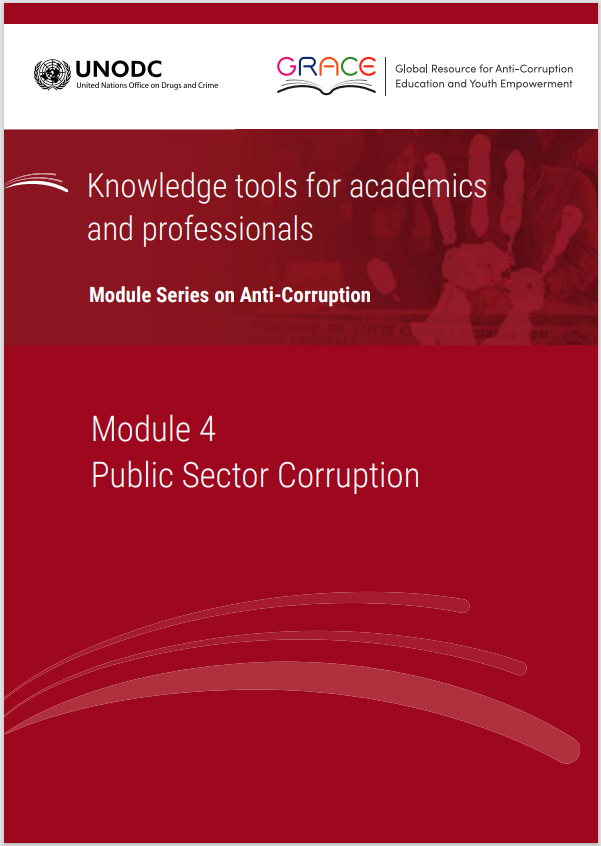This module is a resource for lecturers
Additional teaching tools
This section includes links to relevant teaching aides such as PowerPoint slides, video material and case studies, that could help the lecturer teach the issues covered by the Module. Lecturers can adapt the slides and other resources to their needs.
PowerPoint presentation
- Presentation on Module 4 (forthcoming)
Video material
- Videos on collective action initiatives, developed by the Center of Collective Action at the Basel Institute of Governance » This series offers interviews with some of the leading anti-corruption and collective action experts who explain what is collective action, what benefits they bring to markets and society, who is involved in them and success strategies for Collective Action Initiatives.
- What is corruption? (2018). Phil Nichols, University of Pennsylvania (15 minutes). » This video is part of an online course on corruption by the University of Pennsylvania, available at Coursera.
- Corruption risks in public procurement (2018). African Maths Initiative (7 minutes).
Websites
- The Safra Centre at Harvard University Working Paper Series » This database consists of more than 500 papers on corruption, published by former and current members of the Edmond J. Safra Research Lab at Harvard University.
- ANTICORRP » The Anticorruption Policies Revisited: Global Trends and European Responses to the Challenge of Corruption (ANTICORRP) is a research project funded by the European Commission. The project consists of 20 research groups in 15 European Union countries and offers various publications on corruption-related issues.
Case studies, news reports and blogs
- CoST International (2019). Transparent procurement systems: good for the public, the private sector and the SDGs , 27 September.
- Iheukwumere, Marvellous (2019). Leavering Blockchain to Combat Procurement Corruption. Global Anti-Corruption Blog, 19 August.
- Moschini, Silvina (2019). Transparency and tech together can safeguard taxpayers' money. World Economic Forum, 26 August.
- Politzer, Malia (2019). Corruption: A neglected obstacle to achieving UHC. Devex, 30 September.
- The Guardian (2018). Three Alstom executives guilty of conspiracy to corrupt , 19 December.
- Transparency International (2019). 25 Corruption Scandals that Shook the World , 5 July.
- Wright, Tom, and Josselin Canevet (2019). Why would a doctor take a bribe? Transparency International, 7 August.
Other material
- KickBack: The Global Anti-Corruption Podcast. » This podcast features regular interviews with leading experts in the anti-corruption field, from academia, politics, activism, journalism, etc. The podcast aims to enhance serious debate and discussion about important issues in the field from a variety of different perspectives. Given the length of each episode (average: 45 min), the lecturer may use it as a pre-class assignment.
 Next:
Guidelines to develop a stand-alone course
Next:
Guidelines to develop a stand-alone course
 Back to top
Back to top
